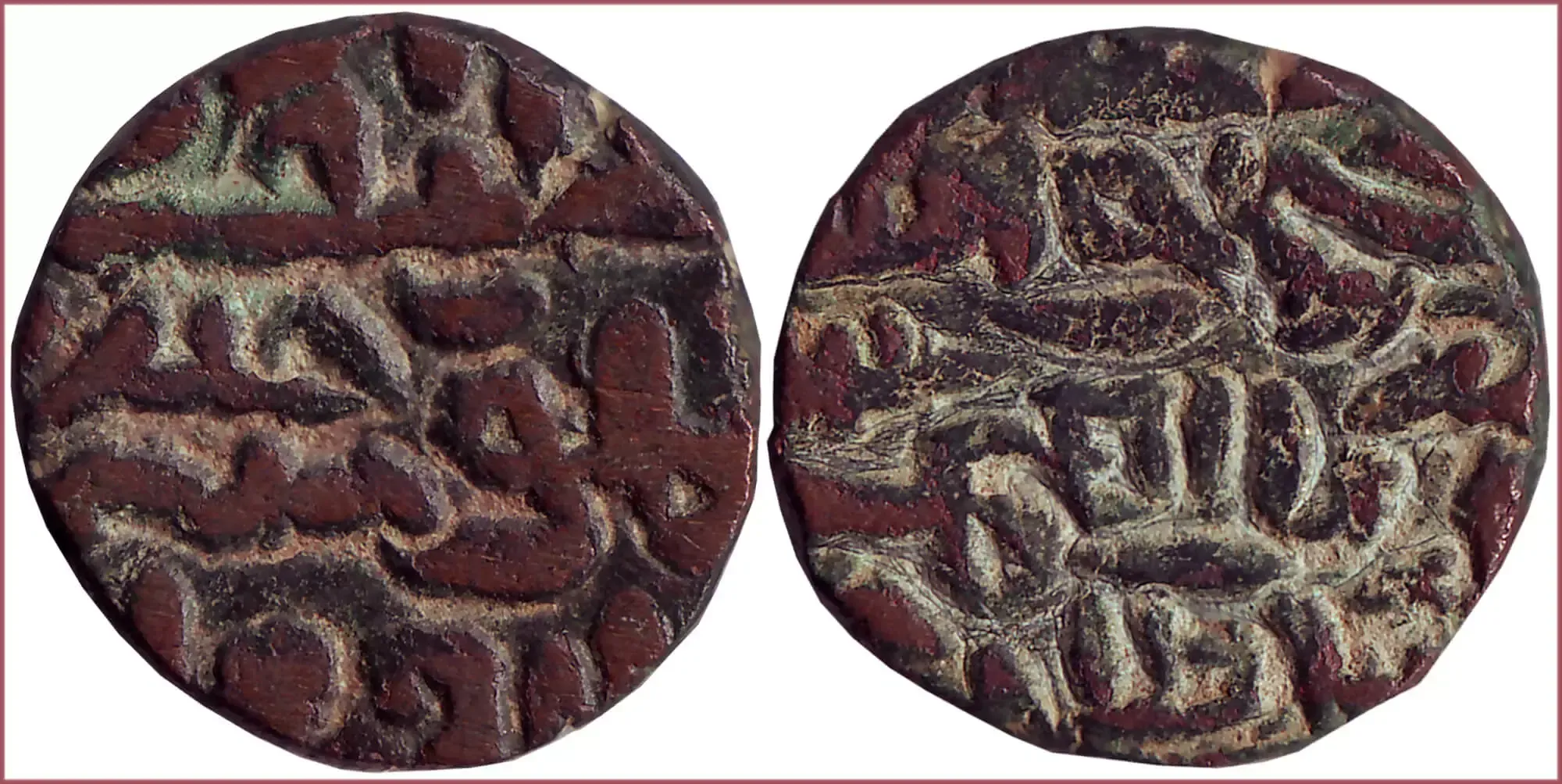TANKA: COIN OF JAUNPUR (INDIA)
Tanka, 1401-1441: Sultanate of Jaunpur
Jaunpur Sultanate (Persian "سلطنت جونپور") — Muslim kingdom in northern India between 1394 and 1494. Nowadays Jaunpur is a city and a municipal board in Jaunpur district in the Indian state of Uttar Pradesh.
Ruler: Shams-ud-Din Ibrahim Shah Sharqi — the third sultan of the Jaunpur Sultanate, ruling from 1401 until his death in 1440.
The name and full title of the Sultan are written in Arabic on the obverse and reverse of the coin.
Quite thick coin for its diameter. Most sources indicate that it is made of extremely low-quality silver (billon). However, considering its appearance, I think it is correct to consider it copper.
- Copper: 18 mm - 9.07 g
- Reference price: 8$
COIN TANKA — WHERE & WHEN (coins catalog: by names & emitents)
- INDIA — INDIAN DYNASTIES (Kingdom of Arakan, Tomara Dynasty...) + INDIAN SULTANATES (Bahmani, Bengal, Delhi, Gujarat, Jaunpur, Malwa, Sur Empire...) + PRINCELY STATES (Bharatpur, Tripura...) + MUGHAL EMPIRE, 13th-18th centuries: tanka
- ISLAMIC STATES (Ayyubid Sultanate, Shirvanshah Dynasty, Tribal Federation of Aq Qoyunlu, Tribal Federation of Qara Qoyunlu, Qarluqs of Hazara, Marashid Dynasty, Emirate of Bitlis, Emirate of Bukhti...), 14th-16th centuries: tanka
- CENTRAL ASIA AND CAUCASIA (Bukhara, Tashkent...), 16th-18th centuries: tanka
TANKA as coin name.
Tanka — historical, mostly Indian, coin. It was made for several centuries from different metals: copper, silver and even gold.
The mass issue of tanka coins dates back to the beginning of the 14th century (Delhi Sultanate). However, there is information about coins with the tanka denomination from somewhat earlier periods.
Frankly speaking, the tanka situation is confusing: different metals, coin shapes, periods, issuers, plots. It is difficult to single out a characteristic feature common to all coins of this type. So, for example, it is known about the simultaneous coexistence of copper (rectangular) and silver (round) tanka of the Great Mughal Empire of the same period (second half of the 16th century)...
Indian copper and silver tanka coins of the 15th-16th centuries (a number of Islamic state formations on the Hindustan peninsula: Gujarat Sultanate, Malwa Sultanate, Bengal Sultanate, Bahmani Sultanate...) are found more often than others in numismatic collections.
It is also known about the coin of the tanka in the lands of medieval Central Asia: the states of the Shaybanids, the Timurids... The latest such coins are dated to the beginning of the 17th century.
The history of the appearance of the tanka coin name is extremely closely intertwined with similar numismatic terms: takka (also mostly India), taka (Bangladesh), tangka (Tibet, Nepal), tank (Cilician Armenia). Most likely, the mentioned names come from Sanskrit and in translation mean "money" (unfortunately, this is only an assumption based on the analysis of many sources).
Sometimes, in my opinion, erroneously, coin names of Turkic origin are placed in the same row as those mentioned: tenge, teňňe, tenga... These terms, according to specialists, were formed from the word tamga (family or personal sign among the nomadic peoples of Asia).











